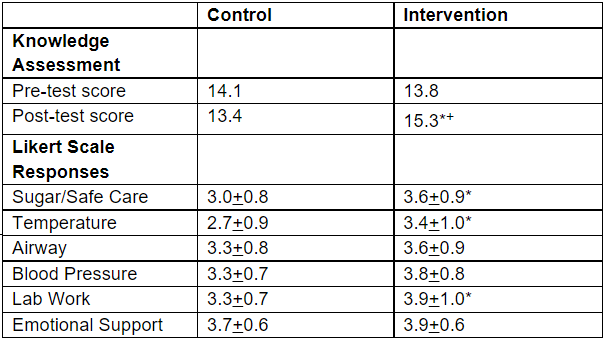Medical Education: Resident
Medical Education 7: Resident 2
554 - The S.T.A.B.L.E. Program Enhances Pediatric Resident Education in Neonatology
Saturday, April 29, 2023
3:30 PM - 6:00 PM ET
Poster Number: 554
Publication Number: 554.229
Publication Number: 554.229
Adrienne Cohen, University of Utah, Salt Lake City, UT, United States; Allison Judkins, University of Utah School of Medicine, Salt Lake City, UT, United States; Tara L. DuPont, University of Utah, salt lake city, UT, United States
- AC
Adrienne Cohen, DO (she/her/hers)
Physician Fellow
University of Utah
University of Utah Health
Salt Lake City, Utah, United States
Presenting Author(s)
Background: Over the past ten years, pediatric residency programs have decreased the time residents spend in the neonatal intensive care unit (NICU), with the expectation that they will attain the same skills and knowledge. The degree of educational exposure varies and depends on the patient population and the medical care team at the time of a pediatric resident’s NICU rotation. S.T.A.B.L.E. is the most widely distributed and implemented neonatal education program to focus exclusively on the stabilization of sick infants. Implementation of the S.T.A.B.L.E. curriculum, both in the US and internationally, has increased provider confidence and competence when performing neonatal stabilization.
Objective: The aim of this study is to assess whether the S.T.A.B.L.E. program can improve resident education in neonatology.
Design/Methods: Informed consent was obtained from all participants. Rotating pediatric resident cohorts were assigned to either control (no S.T.A.B.L.E. course) or intervention (S.T.A.B.L.E. course), randomized by their rotation month. All residents completed a pre-test on the first day of their NICU rotation, prior to intervention, and a separate post-test during the last week of the NICU rotation. During the second year of data collection, residents also completed a questionnaire with a 5-point Likert scale at the time of post-test to assess their confidence in post-resuscitation neonatal stabilization. Data was compiled from the first two years of the study and analyzed using t test and ANOVA with Fishers LSD.
Results: Fifty-nine residents enrolled in the study, 29 in the control arm and 30 in the intervention. Twelve participants were lost to follow-up (6 control, 6 intervention, 20.3%). Post-test scores were significantly higher in the intervention group than pre-test scores and control post-test scores (110+9.6% and 113.1+9.9%, respectively, p < 0.05). Likert scale responses were significantly higher in the intervention group for the subgroups Sugar/Safe Care, Temperature, and Lab Work than control (Table 1).
Conclusion(s): Residents who received S.T.A.B.L.E. training scored higher on post-test and expressed more confidence with post-resuscitation neonatal stabilization than those who did not receive S.T.A.B.L.E. training. Our next steps include analyzing neonatal scores on in-training exams to evaluate whether S.T.A.B.L.E. training increases long-term knowledge retention and improved scores.

